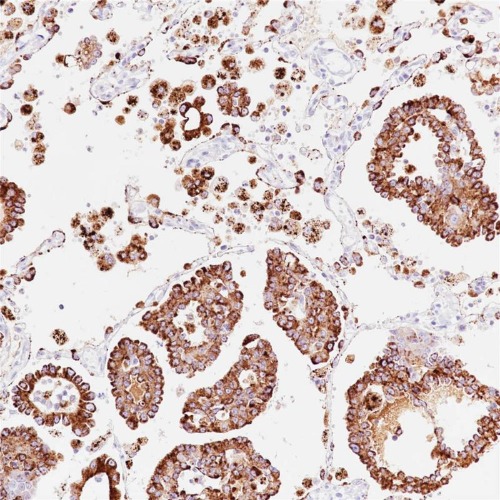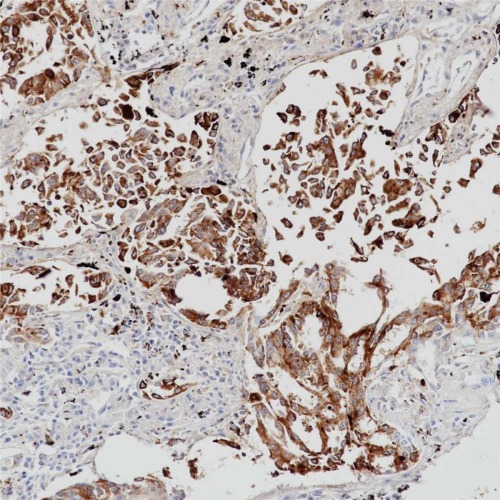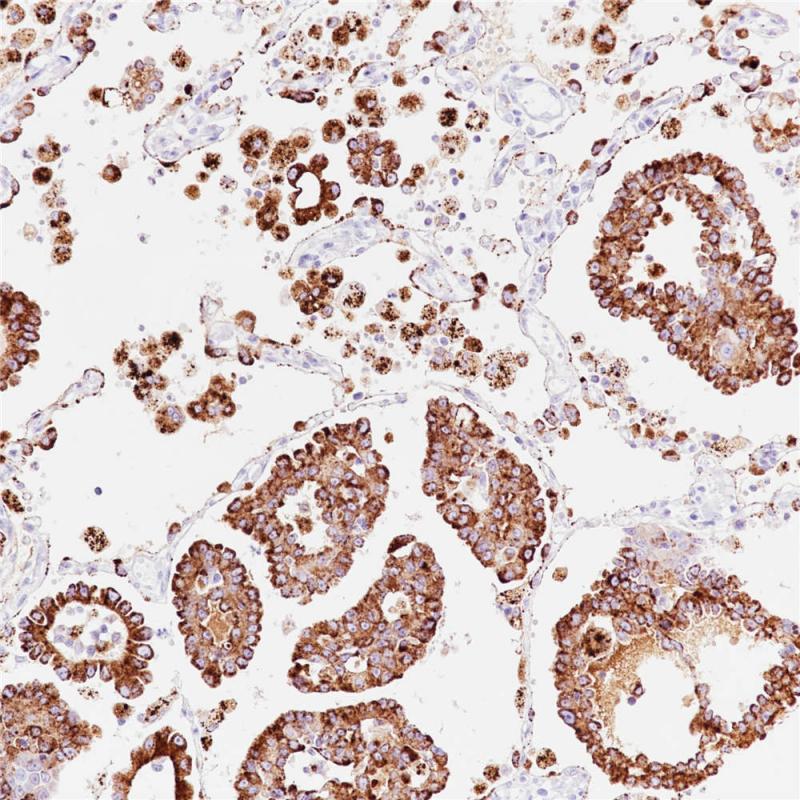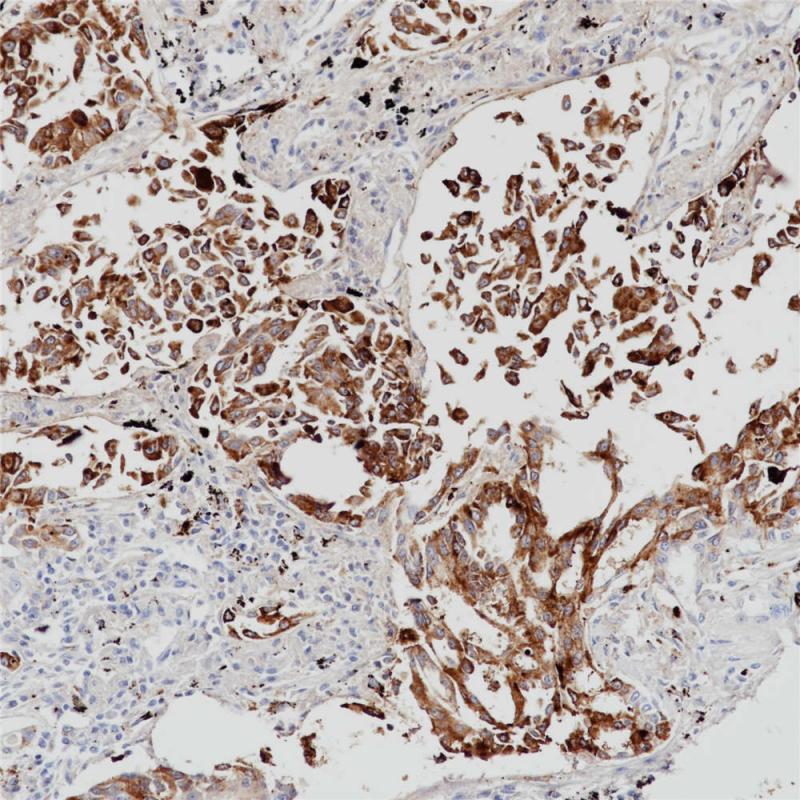Napsin A Rabbit Monoclonal Antibody(ARB840)
CAT.NO. : ARB6630
RMB Please choose
RMB Please choose
Size:
Trail, Bulk size or Custom requests Please contact us
*产品价格可能会有所调整,请以品牌方官网实时更新的价格为准,以确保准确性。
Background
Napsin A is a pepsin-like aspartic proteinase contains 420 amino acids. It is predominantly expressed in the lung and kidney. In the lung, Napsin A is expressed in alveolar type II pneumocytes, regulated by TTF-1, and is involved in the generation of the surfactant protein B. Intra-alveolar macrophages contain Napsin A as a result of phagocytosis. In the kidney, Napsin A is expressed in the proximal tubules, where it is involved in lysosomal protein catabolism.Napsin A is important in the differential diagnosis of lung adenocarcinoma vs. squamous cell carcinoma, used in a panel with TTF-1, CK5 and p63. For tumours presenting as adenocarcinoma of unknown origin, the identification of a lung origin may be aided by NapA together with TTF1, and renal origin by NapA together with PAX8.
Overview
| Target | Napsin A |
| Host Species | rabbit monoclonal antibody |
| Molecular Weight | 45 kDa |
| Purity | ProA affinity purified IgG |
| Species Cross-reactivity | Human |
| Form | Liquid |
| Applications | IHC-P |
| Swissprot ID | O96009 |
| Immunogen | Synthetic peptide corresponding to residues within aa50-150 of Napsin A |
| Storage Buffer | PBS 59%, Sodium azide 0.01%, Glycerol 40%, BSA 0.05% |
| Storage Conditions | -25°C to -18°C |
| Dilutions | IHC-P: 1:100-1:200 |
| Subcellular Location | Cytoplasm |
| Recommended Method | Heat induced epitope retrieval with Tris-EDTA buffer (pH 9.0), primary antibody incubate at RT (18°C-25°C) for 30 minutes |
Data

Immunohistochemical staining of human lung adenocarcinoma tissue sections negative for Napsin A using Napsin A Rabbit Monoclonal Antibody (ARB840).

Immunohistochemical staining of human lung adenocarcinoma tissue sections negative for Napsin A using Napsin A Rabbit Monoclonal Antibody (ARB840).
Storage
Store at 4°C short term. For long term storage, store at -20°C, avoiding freeze/thaw cycles.
Research Use Only
For Research Use Only. Not for use in diagnostic procedures.
 New Products
New Products





















